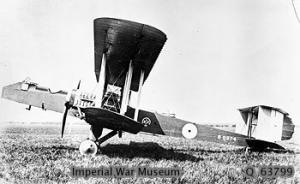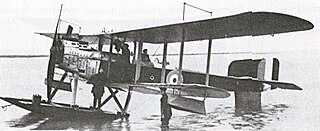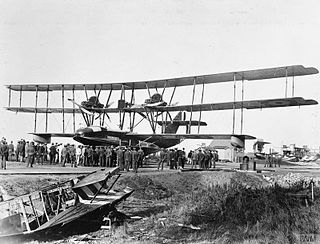
The Dornier Do J Wal ("whale") is a twin-engine German flying boat of the 1920s designed by Dornier Flugzeugwerke. The Do J was designated the Do 16 by the Reich Air Ministry (RLM) under its aircraft designation system of 1933.

The Fairey Aviation Company Fairey III was a family of British reconnaissance biplanes that enjoyed a very long production and service history in both landplane and seaplane variants. First flying on 14 September 1917, examples were still in use during the Second World War.

The Vickers Valentia was a 1920s British flying boat designed during the First World War.

The Blackburn Iris was a British three-engined biplane flying boat of the 1920s. Although only five Irises were built, it was used as a long-range maritime reconnaissance aircraft by the Royal Air Force, where it equipped a squadron for four years, being used to carry out a number of notable long-distance flights. The final version of the Iris, the Iris Mark V was developed into the aircraft that replaced it in Squadron service, the Blackburn Perth.

The Rolls-Royce Condor aircraft piston engine was a larger version of the Rolls-Royce Eagle developing up to 675 horsepower (500 kW). The engine first ran in 1918 and a total of 327 engines were recorded as being built.
Fairey Marine Ltd, latterly known as FBM Marine, was a boat building company based on the River Hamble, Southampton, England. The company was created in the late 1940s by Sir Charles Richard Fairey and Fairey Aviation's managing director, Mr. Chichester-Smith. Both were avid sailing enthusiasts along with Chichester-Smith's good friend and former Olympic yachtsman, Charles Currey.

The Avro Andover was a 1920s British military transport aircraft built by Avro for the Royal Air Force. Four aircraft were built, in two versions. Three aircraft, the Type 561, were used as flying ambulances. The sole example of the Type 563 was used as a 12-seater transport.

The Blackburn R.T.1 Kangaroo was a British twin-engine reconnaissance torpedo biplane of the First World War, built by Blackburn Aircraft.

The English Electric P.5 Kingston was a British twin-engined biplane flying boat built by English Electric. When the English Electric Company was formed in 1918 from several companies, the Phoenix Dynamo Manufacturing Company brought with it the two prototype Phoenix P.5 Cork reconnaissance flying boats. Redesigned, the Cork reappeared as the English Electric P.5 Kingston with a production order for five aircraft.

The Felixstowe Porte Baby was a British reconnaissance flying boat of the First World War, first flying in 1915.

The Felixstowe F.5 was a British First World War flying boat designed by Lieutenant Commander John Cyril Porte RN of the Seaplane Experimental Station, Felixstowe.

The Fairey Campania was a British ship-borne, patrol and reconnaissance aircraft of the First World War and Russian Civil War. It was a single-engine, two-seat biplane with twin main floats and backward-folding wings. The Campania was the first aeroplane ever designed specifically for carrier operations.

The Norman Thompson N.T.4 was a twin-engined British flying boat of the First World War. Although less well known than similar Curtiss and Felixstowe flying boats, 50 were ordered for Britain's Royal Naval Air Service.

The Dornier Delphin was a 1920s German single-engine commercial flying boat built by Dornier Flugzeugwerke. As well as commercial users, single examples were acquired by the United States Navy and the British Royal Navy for evaluation.

The Felixstowe F.4 Fury, also known as the Porte Super-Baby, was a large British, five-engined triplane flying-boat designed by John Cyril Porte at the Seaplane Experimental Station, Felixstowe, inspired by the Wanamaker Triplane/Curtiss Model T. At the time the Fury was the largest seaplane in the world, the largest British aircraft, and the first aircraft controlled successfully by servo-assisted means.
The Nord 1400 Noroit was a French reconnaissance and air-sea rescue flying boat designed and built by Nord Aviation for the French Navy.
The Macchi M.8 was an Italian reconnaissance/bomber flying boat designed by Alessandro Tonini and built by Macchi. It was used by the Italian Naval Aviation and was later flown by crews from the United States Navy.
The Fairey Fremantle was a large single-engine biplane seaplane designed in the mid-1920s for a proposed around-the-world flight. Only one was built.

The Short N.3 Cromarty was a prototype British twin-engined biplane flying boat, designed towards the end of the First World War. Only a single example was built, which first flew in 1921 and was wrecked in 1922.
The Gosport Aircraft Company was a short-lived British aircraft manufacturer based at Gosport, Hampshire formed at the start of the First World War by Sir Charles Allom of White, Allom & Company and Charles Ernest Nicholson of Camper and Nicholsons boat-builders. The company built a number of flying-boats for the British government including the hull for the Fairey Atalanta which at the time was the largest flying-boat hull built in the world.

















